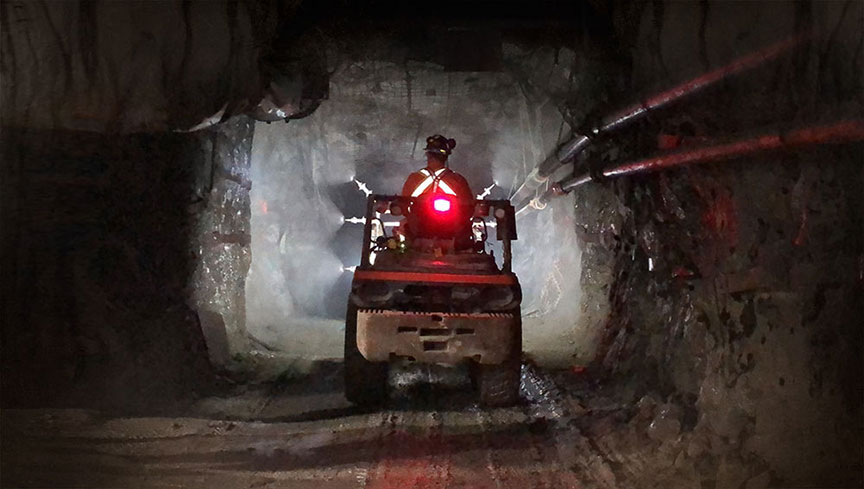After internal reviews and feedback from multiple public hearings, the Mine Safety and Health Administration (MSHA) has finally settled the details of its latest program for improving miners’ health and safety. The new MSHA silica rule, which updates permissible dust levels and outlines expectations for containing and lowering them, will go into effect on June 17, 2024. With its implementation fast approaching, we felt it was valuable to analyze how these measures will affect your mine and to note several important differences from its initial proposal.
The changes made in the final ruling mark a sharp demarcation towards a much more aggressive stance on dust control. Mixing the tone shift with the broad range of variables affected by the MSHA silica rule, there’s a lot for a mine operation to consider. At the center of all of it, though, lies the new permissible exposure limit (PEL).
Meeting the new MSHA silica rule
The refreshed PEL standard, the same as the original proposal and standards set in the newest OSHA program, requires respirable crystalline silica exposure to remain at 50 micrograms per cubic meter of air for a full eight hour shift. Once exposure surpasses the MSHA silica rule, operation must cease until dust levels are stabilized to the appropriate level, or below.
Getting into the policy weeds
In taking a deeper look at the measure’s requirements, mines will need to conduct additional sampling to ensure levels perform to the new PEL. Mines will need to enforce additional sampling as soon as the PEL reaches the action level. An important detail to keep in mind about the MSHA silica rule is that the action level stands at 25 micrograms per cubic meter of air, just half the PEL maximum.
Triggering the action level or above requires mines to continue sampling within three months. If the levels stabilize below the action level, operators must still adhere to regular testing every six months. If a miner is suspected of silica dust exposure, the three-month testing cycle must repeat again.
Beyond the extensive testing, the MSHA silica rule also takes a definitive stance on respiratory protection. The ruling affirms respiratory protection as a defense against miners’ exposure to silica. However, it cannot be used as a compliance measure. If levels warrant the protection, mines must equip workers accordingly while actively lowering the PEL through other means.
The MSHA silica rule also makes clear distinctions for how every mine should approach dust reduction. Mines can no longer rely on administrative controls like miner rotations out of over-exposed areas to reduce the risk. Instead, the ruling requires mines to use engineering controls like providing adequate ventilation to reduce the overall silica levels.
Go deeper with MineKleen®
Between hauling materials, working with restricted underground airflow, excavating resources, and managing tailings, mining is an industry where there’s simply dust everywhere. This harsh environment is what warranted the MSHA silica rule in the first place. As a partner who understands the obstacles of mining, Midwest developed MineKleen®, a product that can reduce dust and water usage by up to 95% with guaranteed compliance. You can read about that level of extreme performance in this case study detailing our partnership with a non-ferrous underground metal mine in the western United States.
Crafted specifically for underground mine use, it’s available in two formulations. MineKleen Plus® delivers a dramatic reduction in dust and inhibits mold as it penetrates deep into limestone, gravel, sand, clay, or native soils. With the power of a polymeric binder, it can also improve service life, reduce applications, increase stabilization, and comply with the MSHA silica rule. MineKleen Basic® provides an economic alternative by offering similar effectiveness to MineKleen Plus® with a lower initial investment. No matter the formulation, MineKleen cuts the cost of dust control without sacrificing safety or quality. For example, one mine experienced nearly a quarter million dollars in savings using the program in just one year.
Ultimately, Midwest’s experienced mining experts have created MineKleen as your all-in-one program. By dramatically eliminating silica, you can reduce your miners’ exposure risk and protect their lungs from long-term damage. With less maintenance and increased road longevity, you can see productivity improvements in your day-to-day operation. You can also achieve both of these benefits while meeting extreme compliance results in accordance with standards like the MSHA silica rule. With safety, productivity, and compliance wrapped into one, perfect solution, there’s no question Midwest’s MineKleen goes deeper than the rest.
If you’re looking for ways to adhere to the new MSHA silica rule, look no further than Midwest, the technology and innovation leader in dust control. Contact us today to learn more about how products like MineKleen can keep you compliant.

